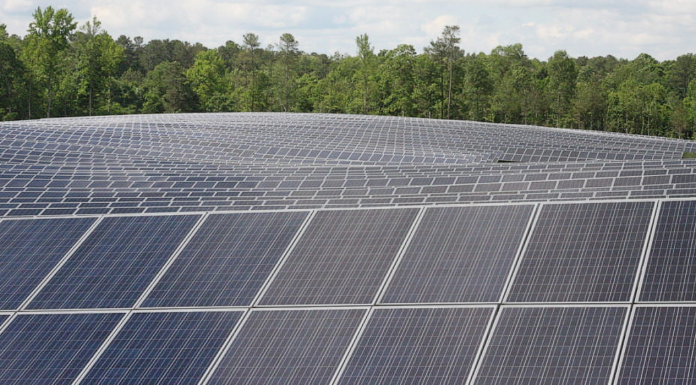The U.S. climate change lobby has massively undermined its own efforts to produce clean and renewable energy with respect to solar panels.
Solar panels are heavily government-subsidized tools in the purported fight against global warming and environmental degradation.
But they’re also extremely toxic—and there’s currently no plan whatsoever to deal with the millions of tons of panels that are reaching the end of their life cycles.
Despite their “renewable” marketing, the bulky, complex electronic panels are either going to landfills or they’re exported to foreign countries where progressive “clean energy” regulations don’t apply.
The problem is also getting exponentially worse as activist groups and state governments are forcing solar energy mandates onto the public, leading to an explosion of commercial and consumer production. A federal “Green New Deal” would be a nightmare scenario.
According to the International Renewable Energy Agency, more than 78 million tons of expired solar panels will have accumulated by 2050 when current clean energy proposals are scheduled to reach completion.
For perspective, that’s equivalent to 780 fully loaded Nimitz-class aircraft carriers of toxic trash, each weighing 100,000 metric tons and more than 1,000 feet long.
Another 6 million metric tons of annual solar “e-waste” is expected at the time and no one seems to know what to do, if they’re even interested in talking about it.
“We need to face the fact that solar panels do fail over time, and there’s a lot of them out there,” said Sam Vanderhoof, CEO of Recycle PV Solar, in a recent interview.
“And what do we do when they start to fail? It’s not right throwing that responsibility on the consumer, and that’s where we’re at right now,” he said.
Recycle PV Solar is one of the only companies in the U.S. that’s dedicated to recycling photovoltaic solar panel cells, or PV cells.
Recycling expired panels is part of the earth-saving mythology of solar energy, where sunlight is magically harnessed into electricity and clean fuel without concern for environmental side-effects or unintended economic consequences.
In reality, standard electronics recycling methods don’t work for solar panels, yet they continue to be mass-produced without a viable recycling strategy. Even the most valuable, and toxic, elements of PV cells are wasted, including silver and silicon.
“If we don’t mandate recycling, many of the modules will go to landfill,” said Arizona State University solar researcher Meng Tao, who recently authored a review paper on recycling silicon solar panels, which comprise 95 percent of the solar market.
PV panels also contain lead and aluminum, which are known environmental hazards and groundwater poisons when they leach into surrounding landfill ecologies.
Most solar manufacturers claim their panels will last for about 25 years, and since panels were first mass-deployed in the late 1990s and early 2000s, the deluge of worthless, toxic panels is only beginning.
The big problem is cost. It’s too expensive to recycle them, while all the political payoffs, crony government contracts and taxpayer-subsidized benefits are frontloaded.
“We believe the big blind spot in the U.S. for recycling is that the cost far exceeds the revenue,” Meng said. “It’s on the order of a 10-to-1 ratio.”

